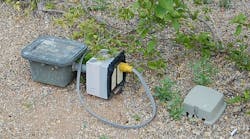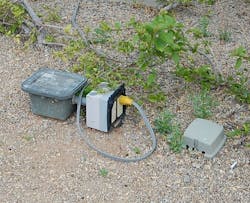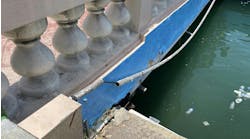Hint: This needs an extra, “extra-duty” cover.
See the answer below.
This is how I found this cover. I don’t know how or why it broke, but I do know that Sec. 406.9(B)(1) requires outlet box hoods installed on enclosures for 15A and 20A, 125V and 250V receptacles installed in wet locations to be listed and “extra-duty” rated. An extra-duty rated cover is designed to be able to withstand a little more abuse than other covers. The hinges are sturdier, and the cover is more durable. There is certainly no guarantee that an extra-duty rated cover would have prevented this situation from happening, but at least it would have given the cover and receptacles a better chance at survival. Rainwater can now easily damage the unprotected GFCI receptacles installed in this box. A soaking wet GFCI device is never a good idea. This cover should be replaced with an extra-duty type.
Any 15A or 20A, 125V and 250V nonlocking-type receptacles installed in damp or wet locations shall be listed and so identified as the weather resistant (WR) type. The existing receptacles in this box should be replaced with WR type to comply with current Code requirements if they have gotten wet.





